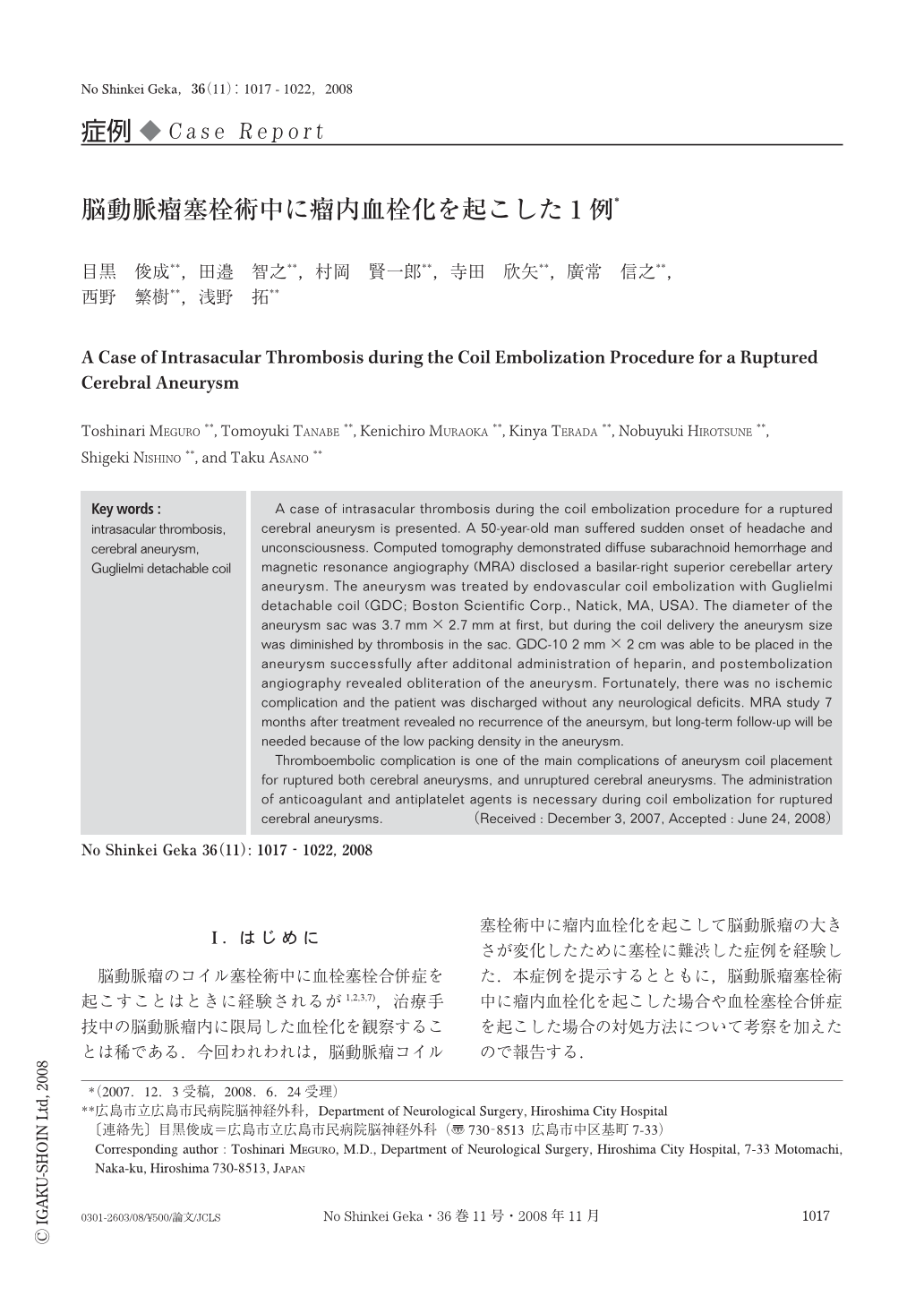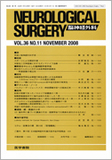Japanese
English
- 有料閲覧
- Abstract 文献概要
- 1ページ目 Look Inside
- 参考文献 Reference
Ⅰ.はじめに
脳動脈瘤のコイル塞栓術中に血栓塞栓合併症を起こすことはときに経験されるが1,2,3,7),治療手技中の脳動脈瘤内に限局した血栓化を観察することは稀である.今回われわれは,脳動脈瘤コイル塞栓術中に瘤内血栓化を起こして脳動脈瘤の大きさが変化したために塞栓に難渋した症例を経験した.本症例を提示するとともに,脳動脈瘤塞栓術中に瘤内血栓化を起こした場合や血栓塞栓合併症を起こした場合の対処方法について考察を加えたので報告する.
A case of intrasacular thrombosis during the coil embolization procedure for a ruptured cerebral aneurysm is presented. A 50-year-old man suffered sudden onset of headache and unconsciousness. Computed tomography demonstrated diffuse subarachnoid hemorrhage and magnetic resonance angiography (MRA) disclosed a basilar-right superior cerebellar artery aneurysm. The aneurysm was treated by endovascular coil embolization with Guglielmi detachable coil (GDC; Boston Scientific Corp., Natick, MA, USA). The diameter of the aneurysm sac was 3.7mm×2.7mm at first, but during the coil delivery the aneurysm size was diminished by thrombosis in the sac. GDC-10 2mm×2cm was able to be placed in the aneurysm successfully after additonal administration of heparin, and postembolization angiography revealed obliteration of the aneurysm. Fortunately, there was no ischemic complication and the patient was discharged without any neurological deficits. MRA study 7 months after treatment revealed no recurrence of the aneursym, but long-term follow-up will be needed because of the low packing density in the aneurysm.
Thromboembolic complication is one of the main complications of aneurysm coil placement for ruptured both cerebral aneurysms, and unruptured cerebral aneurysms. The administration of anticoagulant and antiplatelet agents is necessary during coil embolization for ruptured cerebral aneurysms.

Copyright © 2008, Igaku-Shoin Ltd. All rights reserved.


